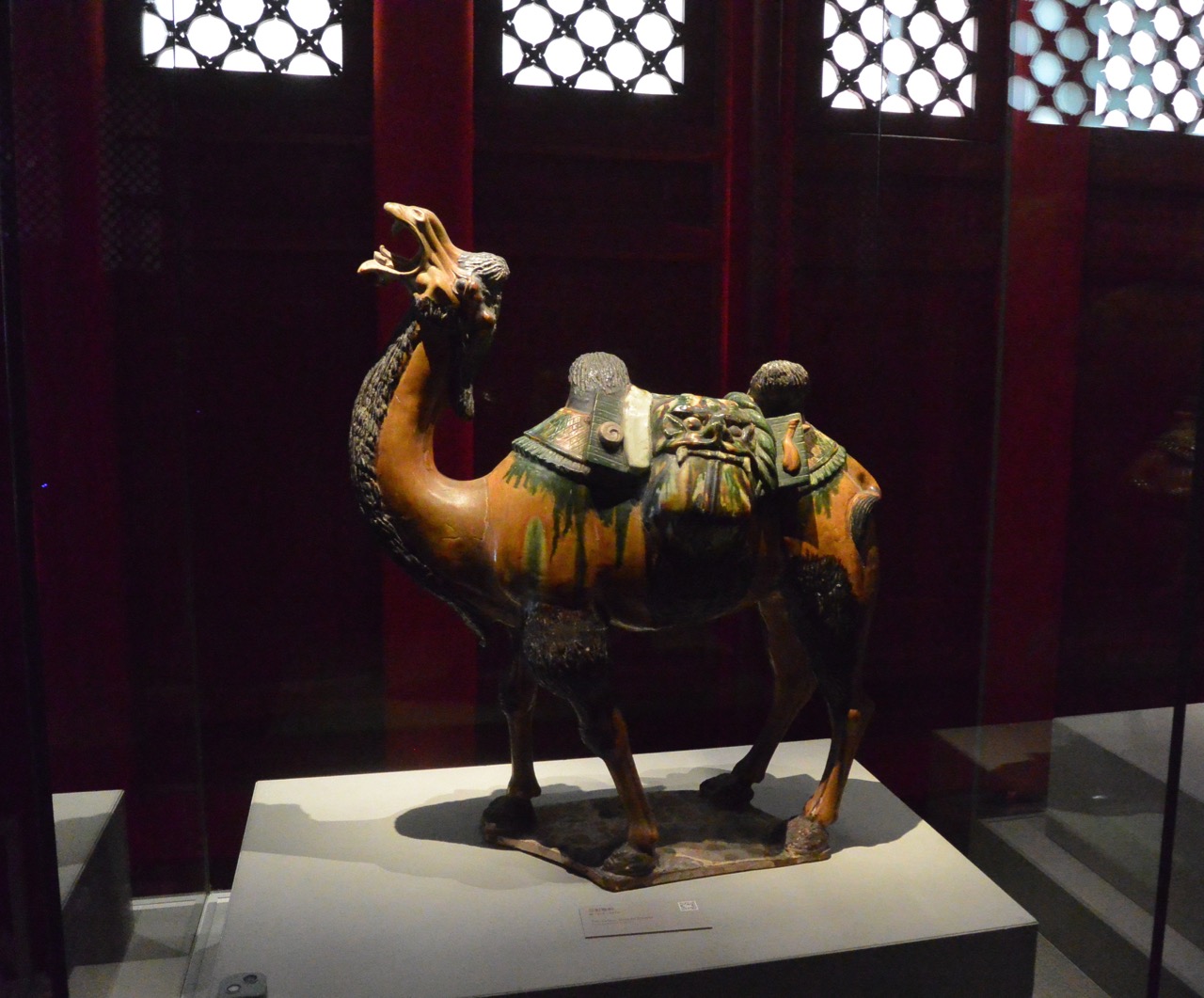Kukai 空海, Empty Ocean. Ask any Chinese and they will tell you that the Tang Dynasty (唐朝 Chn, 618–684 and 705–904 AD) was the height of Chinese civilization. Compared to any other nation in the world at the time, they were civilized, were prosperous and at peace. Chang ‘an, it’s capital, was also the largest city in the world. Their art and architecture were elegant and its simplicity influenced forevermore what we know today as the Japanese esthetic. It was the height of classical Chinese poetry and painting. Think poet Li Bai. Their art was marked by elegance and economy of expression.

Emperor Taizong, as a sign of the peace between the two countries, created fixed borders between the Tibet and China. His edict was recorded in a bilingual inscription on a stone pillar outside the Jokhang temple, the Central Cathedral in Lhasa.

Further, the emperor gave his daughter, Princess Wencheng, in marriage to the Tibetan King Songstan Gampo. She would become one of the King’s two wives.

At what is today Yushu (Chn.) or Jiegu (Tib.), she waited a year for the King to fetch her. While there she built a temple whose vertical rocks that bear Padmasambhava’s footprints. The statues she commissioned are still standing and one of the few extant examples of Tang statuary. Today, 1200 years later, the former capital city is called Xian, Western Peace, a place we know because it houses the Terracotta Army that guards the funeral mound of the earlier Han Dynasty.

In the Tang Dynasty, a young Japanese pilgrim went to Chang ‘an, the capital of Tang China. He was searching. He wanted to get the esoteric Vajrayana Buddhist teachings. His name was Kukai, or in hanzi 空海. Empty Ocean.
He found an old man who he heard held this transmission. When he met him, the old man said, “What took you so long? I’ve been waiting for you, you are my dharma heir.”
He the began the long process of transmitting not just the meaning of these teachings, but the secret, arcane rituals for manifesting the mandala (Skt:abhisheka) and for the transmission of the Kriyayoga Tantra, part of the esoteric Buddhist teachings that came directly from India to China at least 100 years before. The transmission took a while. At the end his lama gave him all the ritual objects, crowns, tangkhas, vajras, bells, mandalas, his kashira (robe), and at that point Kukai became a vajra master. Of all these objects nothing was more sacred than the anointment, the transmission of the secret teacher-to-disciple teachings of the ancient Kriyayoga.
His teacher said to Kukai, “Take these back to your country, vajrayana is finished in China.”
Then his lama died. Kukai returned and established a monastery, Koyasan for one of the two vajrayana sects in Japan. His became known as Shingon, 真言, literally meaning true words, or mantra in Chinese .
At that point Japan had no alphabet; they used hanzi, classical Chinese characters, or as they are known in Japanese, the kanji. But there were problems. Since kanji has had two different sets of pronunciation, one based on Sino-Japanese pronunciation and the other on native Japanese pronunciation, it was difficult to determine whether or not a certain character was either used to represent its pronunciation or its meaning. Kukai created two alphabets one for common use, the other to enable the writing and pronunciation of foreign words, basically leaving the kanji as it is or as a written language for scholars. They are the hiragana (ひらがな) and the katakana. This was a watershed moment for Japanese civilization.
Here is the far-out part. One night in 1987, after my mother passed into the next world, I was with Kobun Chino Roshi in Taos and we got very very drunk. He told me that the hiragana is a poem on impermanence. Not only that but if you chant it, a very sweet, yet mournful tune, starting with the second, then the third letter, they are different songs. Here it is in English. It is called the Iroha:
The colorful flowers are fragrant, but they must fall.
Who in this world can live forever?
Today cross over the deep mountains of life’s illusions
And there will be no more shallow dreaming,
No more drunkeness.
With thanks to Matt DiRodio. Images provided by the author.
